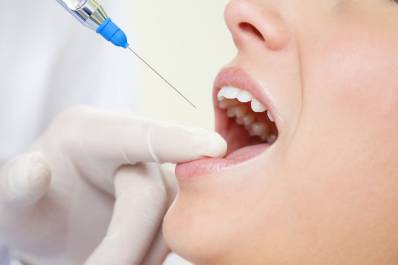What Anesthesia For Wisdom Teeth

The process of removing wisdom teeth, also known as third molars, is a common dental procedure that often requires some form of anesthesia to ensure patient comfort. The type of anesthesia used can vary depending on the complexity of the procedure, the patient’s anxiety level, and the dentist’s or oral surgeon’s preference. Understanding the different types of anesthesia available can help patients feel more at ease when undergoing wisdom teeth removal.
Local Anesthesia
Local anesthesia is the most common type used for wisdom teeth removal. It involves injecting a numbing medication around the tooth to be removed, which blocks the nerve endings, preventing pain signals from being sent to the brain. The most commonly used local anesthetics include lidocaine, mepivacaine, and articaine. This type of anesthesia allows patients to remain awake during the procedure, and they can usually return to their daily activities shortly after, albeit with some dietary restrictions to avoid discomfort.
Sedation Anesthesia
For patients who are anxious about the procedure or if the removal of the wisdom teeth is expected to be particularly complex, sedation anesthesia might be recommended. Sedation can range from mild to deep and is administered through inhalation, orally, or intravenously. The most common forms of sedation include:
- Nitrous Oxide Sedation: Also known as laughing gas, this is a mild form of sedation that is inhaled through a mask. It helps patients relax and can reduce anxiety but does not put them to sleep.
- Oral Sedation: This involves taking a pill or liquid before the procedure. The effects can range from mild to moderate sedation, depending on the dosage and type of medication.
- IV Sedation: Administered through a vein, IV sedation can induce a deeper level of sedation. It allows the dentist or oral surgeon to adjust the level of sedation during the procedure.
General Anesthesia
In rare cases, especially if the procedure is expected to be very complex or the patient has severe dental anxiety, general anesthesia might be considered. General anesthesia puts the patient completely to sleep during the procedure. This is usually done in a hospital setting and requires careful monitoring and post-operative care.
What to Expect
Regardless of the type of anesthesia chosen, patients should discuss their medical history, including any medications they are currently taking, with their dentist or oral surgeon. This is crucial to avoid any complications or adverse reactions to the anesthesia.
After the procedure, patients may experience some discomfort, swelling, and bleeding, which can be managed with over-the-counter pain medications and cold compresses. It’s essential to follow the post-operative instructions provided by the dentist or oral surgeon to ensure a smooth recovery.
Choosing the Right Anesthesia
The decision on which type of anesthesia to use for wisdom teeth removal should be made in consultation with a dentist or oral surgeon. They can assess the patient’s health status, the complexity of the procedure, and the patient’s preferences to recommend the most appropriate type of anesthesia.
Key Takeaways
- Local anesthesia is commonly used for straightforward wisdom teeth removals.
- Sedation anesthesia can help with anxiety and is suitable for more complex procedures.
- General anesthesia is typically reserved for very complex cases or severe anxiety and is performed in a hospital setting.
- Patients should carefully follow pre- and post-operative instructions to ensure a safe and successful procedure.
Frequently Asked Questions
Is anesthesia always necessary for wisdom teeth removal?
+Anesthesia is generally necessary to ensure patient comfort during the procedure. However, the type and extent can vary depending on the individual case and patient preferences.
Can I drive home after receiving anesthesia for wisdom teeth removal?
+If you've received sedation or general anesthesia, it's advisable to have someone drive you home due to potential drowsiness and impaired reaction times. For local anesthesia, you may be able to drive, but it's best to consult with your dentist or oral surgeon for specific advice.
How long does it take to recover from wisdom teeth removal under anesthesia?
+Recovery time can vary but typically involves a few days of rest and a soft diet. The effects of anesthesia, particularly sedation and general anesthesia, may take several hours to fully wear off. It's essential to follow post-operative instructions for a smooth recovery.
Conclusion
The removal of wisdom teeth is a common procedure that can be managed comfortably with the right choice of anesthesia. By understanding the options available and discussing them with a dentist or oral surgeon, patients can ensure that their procedure is as comfortable and stress-free as possible. Remember, the goal of anesthesia in wisdom teeth removal is not only to prevent pain during the procedure but also to provide a comfortable recovery experience.
